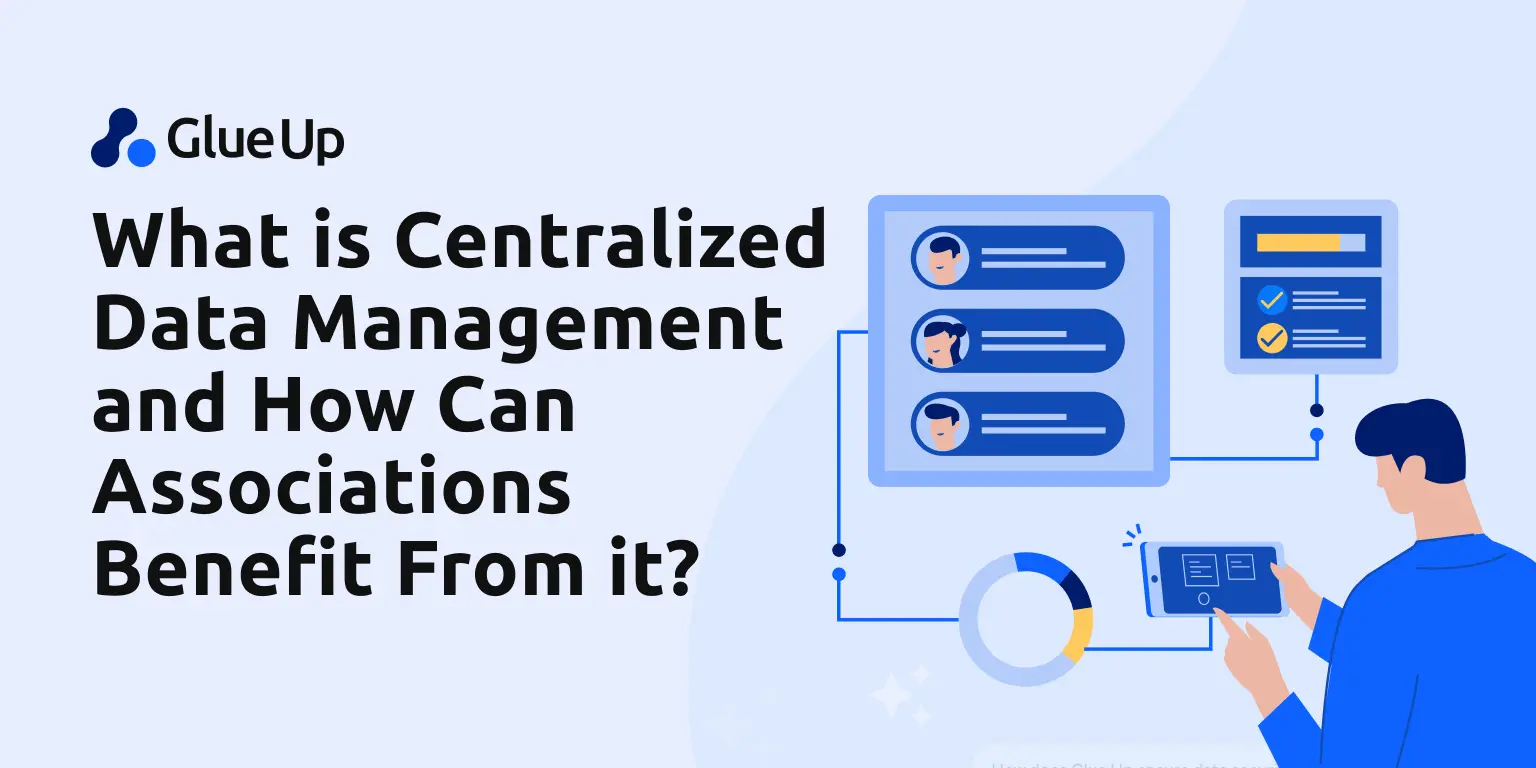
Marissa Mayer, former Yahoo! president and CEO, once said, 'With data collection, ‘the sooner the better’ is always the best answer.' Her statement emphasizes the importance of quickly processing and utilizing data. This is only possible when data is collected in a centralized manner.
Data centralization is very important for any association. It enhances efficiency, ensures security, and facilitates informed decision-making by providing a unified view of all critical information.
Additionally, it reduces operational complexities and promotes a streamlined workflow across various departments.
This blog highlights the importance of data centralization and the significant benefits it offers to associations. Continue reading to discover more about its transformative impact.
Key Takeaways
Centralized data management simplifies operations by consolidating data in a single location, which not only speeds up data access and management but also enhances security measures.
Data centralization helps associations significantly improve operational efficiency and reduce costs.
Centralizing data ensures that all information is consistent and maintained in its most accurate form across the organization.
A centralized data system supports better strategic decision-making by providing comprehensive insights into member behaviors and preferences.
Glue Up’s Membership CRM stands out as a strategic asset for centralizing data management. It integrates various functionalities and facilitates better data management, improving overall member relations and operational efficiencies.
The Benefits Of Centralized Data
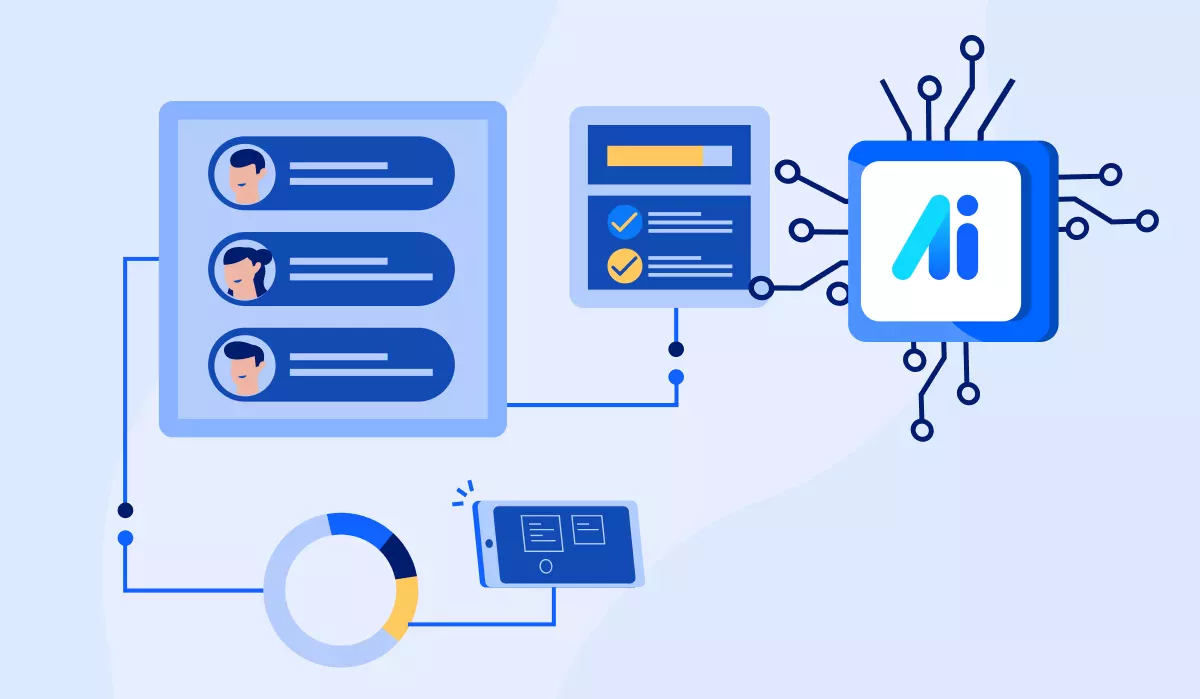
Centralized data presents all the data in one place, acting like a one-stop shop where you can find everything you need without having to look elsewhere.
When the data is in one place, it not only saves time and resources for associations but also improves member engagement, aids in improved decision-making, enhances collaboration, streamlines operations, and helps demonstrate value.
That's why 40% of data professionals cite data centralization as a key driver for improving data quality and reliability.
However, we've outlined key reasons why data centralization is mandatory and why associations are increasingly adopting it. Now, let's explore its tangible benefits.
1. Data Security
Centralized data management consolidates data into one system, enhancing visibility and control, which reassures members that you value their information and are dedicated to keeping it safe.
The centralized approach also makes it easier for you to implement strong security measures, such as encryption and access controls, further reinforcing the safety of your data.
Furthermore, studies show that 63% of consumers consider secure collection and storage as the most important factors when sharing personal data with an organization.
When you acknowledge this, your members are more likely to trust you with their data, knowing that you take their privacy and security seriously.
2. Data Integrity
Data centralization ensures data integrity. This means that the data remains accurate and complete throughout its entire lifecycle, having not been altered at any point and remaining in its original form. When all data is stored in one place, the chances of discrepancies are reduced.
3. Data Consistency
Data centralization guarantees data consistency, meaning that once data is accurate, it remains unchanged and consistently precise over time. This consistent accuracy is crucial because, as statistics show, 80% of chief data officers find it challenging to ensure data is enriched consistently at scale.
Therefore, centralization offers significant benefits by maintaining consistency across all data points, reducing discrepancies, and enhancing reliability throughout an organization's operations.
4. Operational Efficiency
Centralized data helps streamline processes by saving time and resources that scattered data would otherwise consume.
Additionally, it significantly reduces data silos, which occur when information is isolated in different departments rather than in a single collection point. Centralized data is easy to process due to automation, ultimately improving decision-making.
5. Reduced Costs
Centralized data plays a significant role in reducing costs. Without scattered data, there is no need to spend on storage devices for unscattered data.
Additionally, centralized data makes work easier for your employees, preventing a drain on resources and saving a lot of money. Furthermore, centralization eliminates redundancies and reduces the risk of data breaches, helping you avoid penalties and save money.
How to Start with Centralized Data
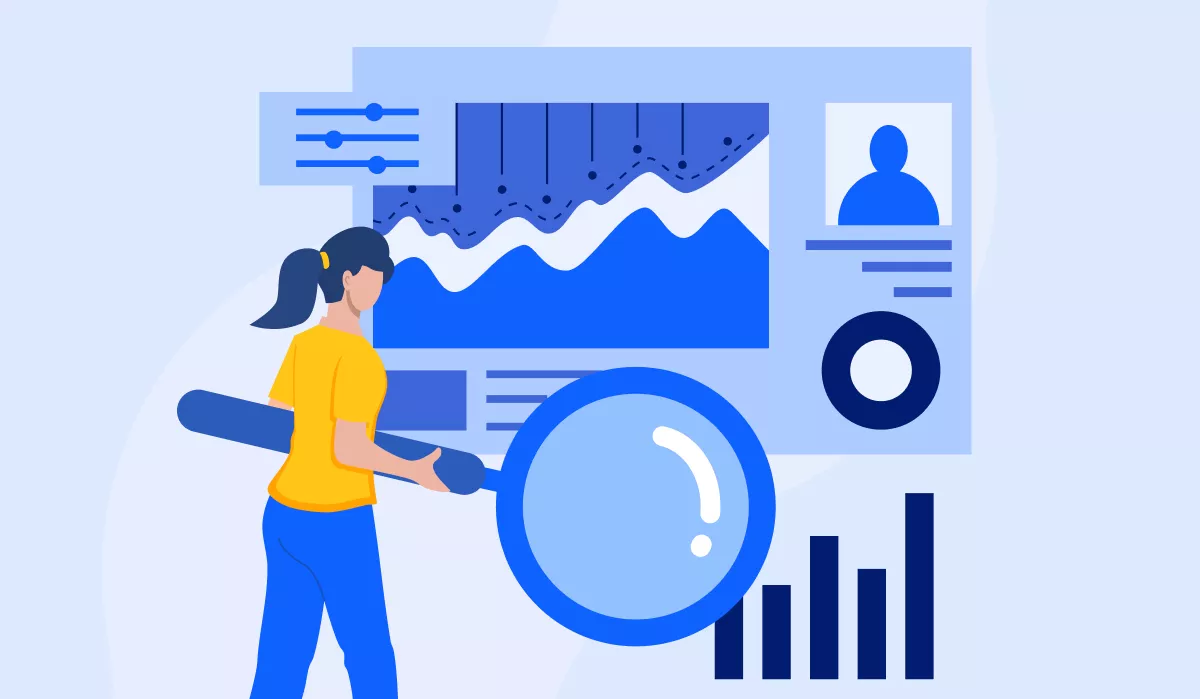
Starting with data centralization is a significant and step-by-step process. However, you can proceed by following these steps:
Create a Single Source of Truth
The first step is to create a single source of information. When you create such a source, the chance of discrepancies drastically decreases. When there are multiple sources, there might be some misleading information.
Also, implementing a single source of truth can effectively address these issues by consolidating data and ensuring accuracy and consistency across all business operations.
CFOs identify data being siloed (69%) and inaccurate data for forecasting and planning (40%) as two of the three biggest mistakes organizations make. A single source minimizes such errors and enables more precise forecasting and strategic planning.
Everyone is on the same page, and transparency in the information serves as a driving force. Such a source can be created by selecting one membership database where all the data gets collected.
Integration of various data sources would help create such a single source of truth.
Identify and Set Goals
Once the single source is created, the next step is to identify and set your goals. Be clear about what you want to achieve with data. Understand why you want centralized data and what you aim to accomplish with it.
Identify your needs and the association's needs or what you are missing that you can work on by leveraging the data.
For example, you might aim to increase the membership rate by a certain percentage, boost event attendance, improve targeted marketing, gain endorsements, or achieve other objectives.
Once you have identified your goals, the next step is to set specific targets. For instance, you might aim to grow your membership by 1000 new members by the end of the year or within a one-year timeframe.
However, it's essential to ensure that your goals are realistic and achievable.
Prioritize Your Data
Prioritizing your data involves concentrating on the information that is most crucial for your objectives. Even within a centralized system, it's not about collecting every piece of data but rather focusing on data that aligns with your strategic goals.
Eric McGee emphasizes the competitive advantage of this approach, stating, "In the next two to three years, consumer data will be the most important differentiator. Whoever is able to unlock the reams of data and strategically use it will win."
This perspective underscores the significance of not just gathering data but harnessing it effectively to drive business success.
For example, if your goal is to grow your membership, you would focus on data related to what motivates members to join, what problems you solve for them, and what makes them happy to be part of your association.
Once you have this data, you can process it and design a membership marketing strategy to attract new members.
Embrace an Incremental Process
When embracing the centralized data approach, it's important to proceed gradually rather than try to implement everything at once.
Taking incremental steps, confirm that each component of your modern centralized system is implemented effectively and integrated seamlessly with your existing systems. This approach allows you to minimize disruptions and optimize the benefits of centralizing your data.
Use Your Reports
Use your reports to track progress and identify trends and patterns. Reports are invaluable for making data-driven and insightful decisions, as they allow you to check how your goals are being pursued.
Moreover, reports help you share insights with stakeholders, keeping everyone informed and aligned.
The reports provide a clear picture of your marketing efforts' effectiveness, highlighting what's working well and areas that may need improvement.
Use a Strategic Focus to Drive Revenue
Centralizing your data offers a wealth of opportunities to boost revenue by better understanding your members and more effectively meeting their needs.
You need to capitalize on the insights from centralized data, and you can also tailor your offerings and strategies to drive revenue growth.
Here's how:
Identify Member Demographics and Interests: Use centralized data to understand who your members are and what they're interested in. This information allows you to create better marketing campaigns and offerings that resonate with them, increasing engagement and revenue.
Offer Relevant Products and Services: Based on the insights gained from data, develop products and services that cater to your members' specific needs and interests. This targeted approach can lead to higher sales and member satisfaction.
Optimize Pricing Strategies: Analyze the data to determine the optimal pricing for your products and services. Understand what your members are willing to pay. Thus, you can maximize revenue without sacrificing member loyalty.
Explore New Revenue Streams: Centralized data can reveal opportunities for non-dues revenue ideas, such as partnerships with businesses that align with your members' interests or the development of premium services that cater to specific member segments.
Centralized data increases overall revenue and enhances member satisfaction and loyalty, driving long-term growth for your organization.
Top 10 Centralized Data Platforms for Managing Member Data
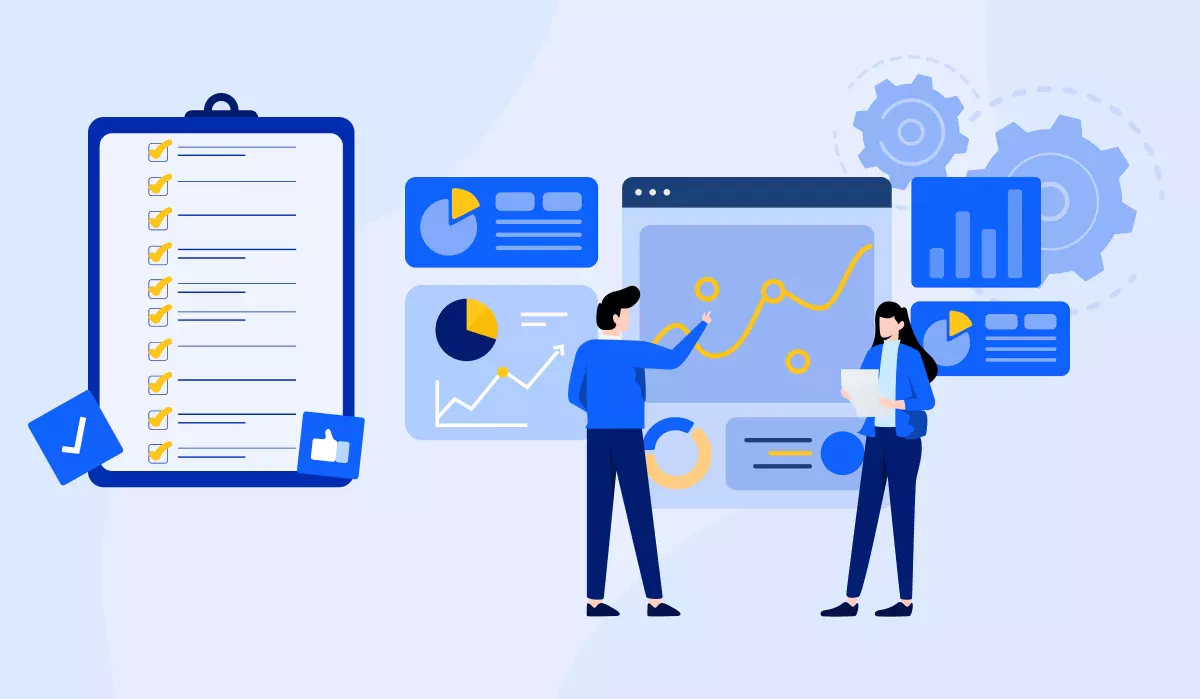
Creating a central system or single source of truth requires tools or platforms, which is why 57% of professionals have reported plans to implement a tool to centralize data.
A robust and efficient platform equipped with comprehensive features can significantly enhance your performance and operational efficiency. On the other hand, a less capable tool can hinder your progress and impede your organization's overall effectiveness.
Let's find out the best tools that are essential to achieving data centralization.
1. Glue Up
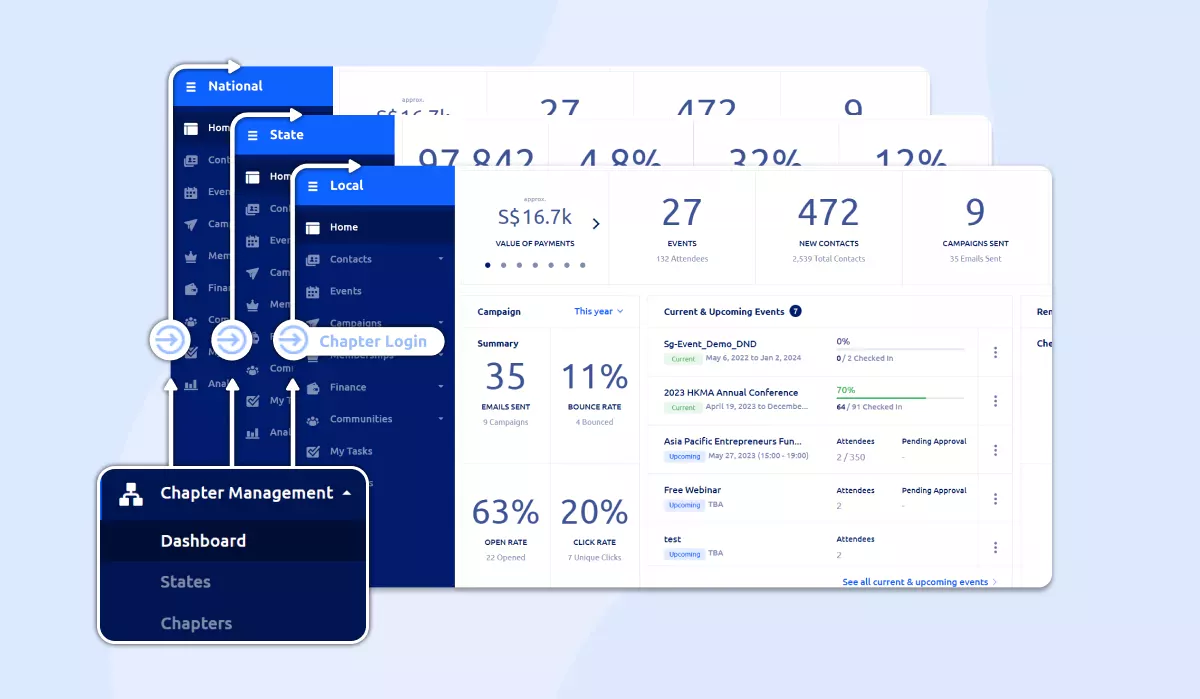
Glue Up’s advanced Membership CRM centralizes your data, providing a unified view of member interactions and financial activities. The platform simplifies operations, improves engagement, and supports smarter decision-making.
Key Benefits of Glue Up’s Membership CRM
Centralized Data Management: Access all member data in one place for easy management and actionable insights. Simplify contact organization and understand member behaviors to refine your strategies.
Streamlined Workflows: Automate sales processes with customizable pipelines and tools that track progress, optimize strategies, and boost conversion rates.
Enhanced Financial Integration: Monitor and manage financial data seamlessly alongside member profiles, making budget tracking and reporting effortless.
Engagement Insights: Custom dashboards and contact insights provide a detailed view of member interactions, enabling data-driven decisions.
Tailored Member Communication: Personalize messages using advanced segmentation, increasing relevance and boosting member satisfaction.
Glue Up’s Membership CRM is a strategic solution for associations looking to centralize operations, enhance efficiency, and build stronger member relationships.
Discover the difference; book a demo and explore how Glue Up can transform your association management.
2. Segment
Segment consolidates data from various sources, such as websites, apps, and tools, into one centralized platform. This streamlines the collection and analysis process, enhancing optimization efforts.
Users can connect to different data sources, such as websites, online stores, email campaigns, CRMs, and mobile platforms. Once connected, users can view all data, including individual customer interactions across platforms. This data can then be sent to designated destinations like Google Analytics or Mixpanel.
3. Emarsys
Emarsys is a customer data platform focused on providing companies with insights for personalized customer engagements.
It consolidates data to offer a holistic view of each customer, integrating various online and offline channels like direct mail, the web, SMS, and email. Using artificial intelligence, Emarsys enables automated and personalized marketing.
Companies can create automation based on customer lifecycle stage, predicted customer value, or recent actions across channels, enhancing the overall customer experience.
4. Optimove
Optimove's cloud-based CDP aggregates data from various sources, including first-party data, customer activity, and campaign analytics, to create a 360-degree customer view. This platform offers insights into customer preferences and recommends proactive engagement strategies.
Key features include micro-segmentation and predictive modeling, which analyze transactional, behavioral, and demographic data to segment customers and suggest targeted strategies. These tools enable companies to anticipate customer needs and improve campaign performance.
5. FirstHive
FirstHive’s customer data platform (CDP) collects first-party data from various online and offline sources to create personalized marketing campaigns. Its decision engine analyzes data and suggests tailored customer communication, enabling real-time interactions across multiple channels through rules-based actions.
Specializing in CDP solutions for manufacturers, FirstHive integrates marketing and supply chain data with production systems. Using third-party data inspires supply chain loyalty and identifies key influencers. Manufacturers can enhance products and processes and create personalized experiences for end users.
6. Lytics
Lytics is a customer data platform that enhances brands' marketing and advertising capabilities. It provides unified and comprehensive customer profiles and uses data insights to automate ad and marketing targeting.
This helps brands increase email open rates, achieve higher ad returns, and enhance customer conversion rates through audience segmentation for personalized and real-time approaches.
One of Lytics' unique features is its proprietary First-Party Modeled Audiences powered by Google. It combines machine learning (ML) with Google's audience modeling capabilities to expand brands' initial audiences into millions of potential buyers.
Through automated workflows, it delivers real-time ads to these potential buyers, significantly increasing conversions.
7. BlueConic
BlueConic's Customer Data Platform (CDP) helps companies manage and glean insights from customer data while ensuring compliance with global privacy legislation.
It enables users to create complete customer views, segment data, orchestrate customer lifecycles, and predict the value of current and potential customers. This data can then be used to create targeted ad and marketing campaigns to drive revenue growth.
BlueConic is dedicated to customer data privacy and allows users to set up systems for customers to manage their own data privacy via consent. These systems can be tailored for privacy legislation zones across the globe, including GDPR (Europe), CCPA (California), PIPEDA (Canada), SB220 (Nevada), and potential NYPA Legislation (New York State).
8. ActionIQ
ActionIQ's Customer Data Platform (CDP) is designed to enhance customer experience by eliminating silos in customer data. It provides a 360-degree view of customer identities, detailed audience segmentation, tools for designing and orchestrating customer journeys, and the ability to respond in real-time to customer needs and actions.
The platform offers customized solutions for companies in various industries such as financial services, media, retail, B2B, insurance, and travel and hospitality. ActionIQ's CX Hub offers advanced capabilities for launching and optimizing customer experiences (CX).
Users can design multi-step, multichannel journeys using a no-code drag-and-drop canvas, hyper-segment audiences in minutes, test and customize journeys for different audiences and use cases, and combine streaming and historical data for real-time, relevant experiences.
9. Talend
Talend is a comprehensive data management platform that facilitates end-to-end modern data handling. It offers a wide array of capabilities, allowing it to work seamlessly within any data environment or framework, whether it’s cloud, multi-cloud, hybrid, or on-premises.
This flexibility significantly reduces risks and accelerates the time to value, driving better business outcomes through its modular solution, which is adaptable to any scale or complexity.
As a cloud-independent platform, Talend supports seamless operations across varied data landscapes. It provides a complete suite of modern data management tools—from data integration, quality, and governance to application and API integration.
10. Totango
Totango is positioned as the industry's sole cloud-based composable customer success platform. It offers a flexible approach to managing the entire customer journey lifecycle in a unified location. You can handle your organization's complete customer portfolio, including accounts with complex hierarchy structures and multiple products with this tool.
The platform's outcome-oriented solution design, modular pre-built building blocks, and integrated intelligence allow for quick setup and implementation.
Businesses can efficiently scale, enhance customer experience at every stage of the journey, and drive predictable growth with Totango. The platform is praised for its user-friendly interface and responsive support team.
Totango provides various security and privacy platforms and toolkits, including Spark, SuccessBLOCs, Zoe, DNA-CX, and Totango Shield. It offers multiple pricing packages tailored to businesses of all sizes, including the community package, which is perpetually free for individuals and startups.
Decoding the Leader: Centralized or Decentralized Data?
Organizations often debate whether centralized or decentralized systems are better for data management. While many associations lean toward centralized solutions, some still see decentralization as a viable choice.
Here's a comparison to help you decide which approach suits your association.
Centralized Systems: Efficiency and Simplicity
Streamlined Operations: Centralized systems consolidate all data in one location, simplifying access and management while reducing complexity.
Enhanced Security: Centralized data allows for robust security measures, easier monitoring, and quicker updates to protect sensitive information.
Cost-Effectiveness: These systems require less maintenance and infrastructure, reducing operational costs significantly.
Decentralized Systems: Privacy and Redundancy
Improved Privacy: Storing data across multiple locations enhances privacy and reduces the risk of centralized breaches.
Resilience to Failures: Decentralized systems replicate data across nodes, ensuring that a single failure doesn’t disrupt operations.
Challenges of Decentralized Systems
Higher Costs: Replicating data requires more storage and resources, leading to increased costs and inefficiency.
Complex Implementation: Synchronizing multiple nodes is challenging, causing delays and scalability issues.
Conclusion: Why Centralization Leads the Way
While decentralized systems excel in privacy and redundancy, centralized data management offers unmatched simplicity, security, and cost savings for most associations. Centralized systems consolidate operations, improve decision-making, and streamline data security.
Larry Ellison summed it up well: “Once the business data have been centralized and integrated, the value of the database is greater than the sum of the preexisting parts.”
Centralized data management often leads associations that prioritize efficiency and long-term growth. Are you ready to unlock the benefits of centralization?
Explore solutions like Glue Up, request a demo, and take the first step toward streamlined operations and better data management



